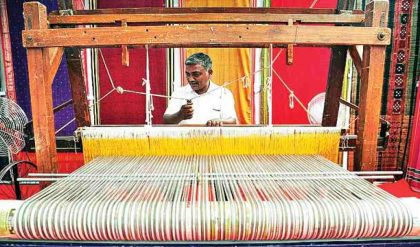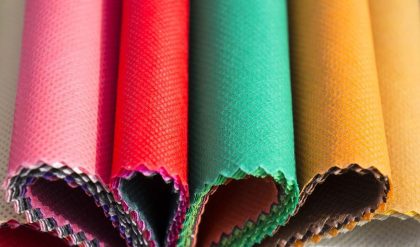Wild silk:
Silk produced by moths of species other than bombyx mori. It is brown in color more uneven and coarser. It is usually called Tussar silk.
Waste silk or silk noil:
Short ends of spun yarns or in blends with cotton or wool. Sometimes it is called waste silk.
Dupion:
Silk yarns made from two cocoons that have been formed in an interlocked manner. The yarn is uneven, irregular and large than regular filaments. It is used in making shantung and duppioni.
Raw silk:
Silk that has not had any degumming.
Spun silk:
Yarns made from short fibres from pierced cocoons and short ends and outside and inside the edges of cocoons.
Properties of silk
Microscopic structure
Silk has its unique properties. It is soft, supple, strong lighter in weight than any other natural fibre. Silk is priced for its weight. Silk is a natural protein fibre where the protein fibroin is held by a gummy substance

Microscopic properties Strength:
Silk is the strongest natural fibre. It has a tenacity of 2.4 to 5.1 grams per denier. More over smoothness of the silk filament yarn reduces the problem of wear from abrasion. The strength of the spun silk yarns depends on the length of silk staple
Shape and appearance:
Silk filaments are very fine and long. They frequently measure about 1000 to 1300 yards in length. The width of the silk is from 9 to 11 microns.
Elasticity:
It is an elastic fibre and its elasticity varies as it is natural fibre. Silk fibre may be stretched from 1/7 to 1/5 its original length before breaking. Cultivated degummed silk viewed longitudinally under a microscopic, resembles a smooth transparent rod under microscope. Silk in the gum has rough irregular surface. Wild silk tend to be quite uneven and is some what dark. It may have longitudinal striations.
Resilience:
Silk retains the shape and resists wrinkling rather well. This is more in fabrics made from pure silk rather than spun silk or weighted silk.
Drapabilty:
Silk has a pliability and suppleness’ that aided by its elasticity and resilience gives it excellent drapability. Heat conductivity: Since silk is a protein fibre. It is a non conductor of heat like wool. Hence it is used for winter apparel.
Absorbency:
The good absorbtive property of silk also contributes to its effect in warmer atmosphere. Silk generally absorbs about 11% of its weight in moisture which makes silk for easy dying and printing.
Cleanliness and wash ability:
Silk is hygienic material because its smooth surface does not attract dirt. It can also be easily cleaned by mild soaps and dry cleaning




Comments are closed.